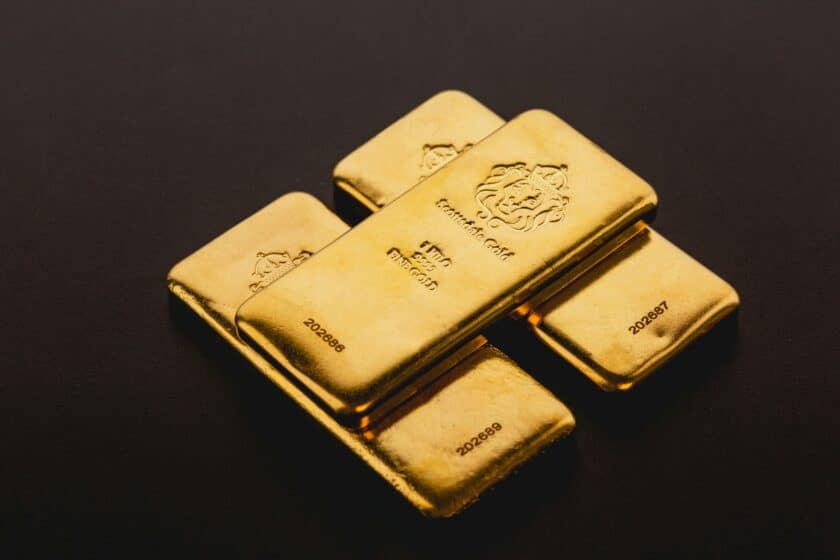It’s excellent timing for this week’s interview from the FundCalibre team with gold hitting an all-time high in March 2024. Ned Naylor-Leyland, manager of the Jupiter Gold & Silver fund, shares his views on the current dynamics affecting the gold market and the intricate nature of gold pricing across different currencies.
We would also note the price of gold has continued to soar. At time of recording (18 March 2024) the gold price was $2,161/oz versus today (3 April 2024) where the price has reached a staggering $2,314/oz*.
Why you should listen to the interview: Ned is a passionate advocate for his asset class who offers his nuanced perspectives on the fund’s investment strategy in relation to market behaviour, underlining the importance of diversification and strategic positioning in precious metals portfolios.
This interview was recorded on 18 March 2024. Please note, answers are edited and condensed for clarity. To gain a fuller understanding and clearer context, please listen to the full interview.
What’s interesting in this interview:
Gold highs amidst challenging headwinds
“What moves the gold price? I’m not going to argue with the idea that geopolitical tensions or even central bank buying are helpful to the performance of gold, but the truth of gold is that there’s no single gold price. Gold is priced in all different currencies. It’s a foreign exchange rate so the sterling gold price is different to the US dollar gold price and generally, when people talk about gold, they’re talking about the US dollar gold price.
“It’s really the opposite of your local currency. For example, if you are long in dollars; in other words, held ‘under the mattress’ is a nice way of thinking about it. For several years, dollars held ‘under the mattress’ have looked reasonably strong due to the very hawkish guidance of the Federal Reserve. What that has led to is people have wanted to own dollars compared to other currencies and even compared to gold, and what we’ve seen is a softening of that situation now.
“People have become more worried about the direction of travel for the real economy and also the direction of travel for policy, whether it’s regarding rates or other supportive measures that can be put in place. The market is becoming more dovish, more accommodative, and that’s really what moves gold versus your local currency.”
Going for gold
“It’s an unfortunate consequence of being a foreign exchange instrument that gold is looked at by technical traders. Just like the dollar/sterling rate or any other kind of foreign exchange rate, people are very much driven by the charts.
“We have two things in play in the dollar-gold price, which is that there’s been – depending on how long you want to go back – either a 14-year or a 4-year resistance level around $2,100 an ounce, which has been capping momentum and interest in investors owning gold and gold miners and all sorts of things related to the subject. And that level has now been taken out. What we’re now into is an environment where momentum traders and people who are sensitive to short and medium-term direction can get on board in the knowledge that we’ve got past that point, and we can trade higher than that.
“But I would also go back and look at the much longer-term situation, which is that gold has been in a bear market against dollars since 1980 and that’s what has supported the US dollar hegemony. The fact that the Treasuries and dollars are held as the risk-free form of money in the financial system is due to the fact that dollars have had it on gold for 43/44 years – and that, in my view, has just changed.
“Now, I don’t think the market’s fully aware of that fact; in fact, the market is definitely not fully aware of that. But at the margin what has changed is we’ve now flipped, in my view, from very long-term bear market conditions for gold vs dollars, to something very important which is a conversation about whether US Treasuries are risk-free, what else is, which, of course, is only gold. You’re not going to convince anyone that sterling is risk free or a barrel of oil or even other things that people are looking at. I think that that is what informs this idea that the dollar-gold price can trade substantially higher now that it’s cleared this level.”
Gold beans in China and black swans in Russia
“I think these two countries are very, very interesting. They don’t drive the behaviour of the US dollar gold price short-term because the physical gold market is only a small part of the overall turnover in gold on a daily basis. Most of it is what we call paper gold, but within the physical gold market, we’ve got several things that are interesting that are happening, which is the ETF Physical Gold held in the West has been drained away over the period of two years in very large volumes – up to 30% of overall physical ETF holdings have disappeared – and it’s all gone to Asia.
“It has principally gone to China and within China, it has been withdrawn from the Shanghai Gold Exchange – the main Chinese gold exchange – and is going into the hands of young people, interestingly, who are buying what are called ‘gold beans’. They’re being held in little glass bottles and accumulated on a monthly basis because they recognise the monetary status of physical gold, the risk-free status of physical gold, which is why they’re choosing to accumulate small amounts of gold all the time, within their salary. This means it’s a lot of people, therefore it’s a lot of gold.
“And the recent Lunar New Year festival in China saw massive gold buying, with huge queues outside bullion dealers. Let’s be clear, we don’t see that here. And frankly, if we do, that will be a bad sign because it will be a sign that things have gone rather wrong for financial instruments in the UK economy if we start seeing queues outside bullion dealers. But this is a powerful shift; the Chinese are no longer buying Treasuries, they’re selling Treasuries and they’re buying physical gold, and they’ve obviously got problems in their local property sector. I see this as a sort of portent of lots of things and a very powerful medium-term influence.
“As for the Russian situation, that’s not so much to do with gold, it’s more to do with Treasuries. Really this is always a conversation about what’s risk-free: gold or Treasuries.
“Central banks know that gold is risk-free, not Treasuries, and the financial system doesn’t realise that gold is risk-free; they think Treasuries are. So this is a non-priced-in problem for the financial system, which is that when the US decides that it can arbitrarily freeze and then potentially give Russian Treasury holdings to the Ukraine, it very much undermines the nature of a Treasury bond as risk-free, outside of the US.
“Short-term, that means that they’re having to replace international demand for US Treasury bonds with domestic demand, but medium to long-term, this is very bad news for the petrol-dollar system and for the things that people think are embedded in the long-term. We are in a very important change in terms of the risk-free form of money and how Treasuries are bought and held in the global financial system.”
Gold flows and breakouts
“Pertaining to gold equities, the thing to understand is this technical level of the gold price that has broken. We would like to see it close above $2,130 / $2,150 at the end of the quarter** which is close now – that would be very, very strong. Because that would be the ultimate form of technical breakout. You usually have daily, weekly, monthly and quarterly charts and now, we’ve got a breakout here in the dollar gold price on pretty much every chart pattern except for monthly and quarterly.And then what happens with gold equities is then we need to see flow because the dollar-gold price is just a foreign exchange rate as the sterling gold price is.”
The investment potential in mining equities
“I’m not expecting much new flow until Q2 because the way this really works is you’ve got two forms of participation in gold mining. One is the one that’s been more consistent over the 20-25 years that I’ve been investing in the space which is retail. Retail investors understand the gold story, they know what it’s about and they quite like the volatility – or have done. So at the margin, you’ve always had a few retail investors interested and involved in the gold equity story, but actually they’ve all gone off to go and do lithium and Nvidia and crypto and all sorts of different things that are not gold or gold miners. Despite this breakout, we haven’t really seen much change to participation in the equities yet.
“And the second slot is the long-only asset allocator, which is much more powerful, much more important. In my career, I’ve really only seen a few brief periods where they’ve been involved, but they are aware of this technical breakout: these professional investors see these charts, they see what’s happened. And I’m very confident at the end of the quarter, when people sit down in investment committees, that they’re going to look at that and go, okay, this has happened now, this breakout is important, it’s meaningful.”
Conclusion: It’s evident that Ned Naylor-Leyland believes investors should strongly consider some gold and silver exposure for their portfolios due to its low correlation to other asset classes, and in this interview he clearly demonstrates its potential value in a diversified portfolio.
*Source: Bullionbypost.co.uk, gold price in USD per ounce
**Note: The gold price closed the quarter at $2,233/oz according to Bullionbypost.co.uk






























